“Precision Sensing, Redefined: VL53L1X Time-of-Flight Proximity Sensor by STMicroelectronics”
Введение
The STMicroelectronics VL53L1X is a state-of-the-art Time-of-Flight (ToF) proximity sensor that offers precise distance measurement capabilities. Utilizing advanced laser-ranging technology, the VL53L1X can measure distances up to 4 meters with high accuracy and speed. It features a compact design, making it ideal for integration into a wide range of applications, including smartphones, drones, robotics, and industrial automation. The sensor operates by emitting a laser pulse and measuring the time it takes for the pulse to reflect back from the target, providing reliable and consistent distance readings. With its low power consumption and robust performance, the VL53L1X is a versatile solution for enhancing the functionality of various electronic devices.
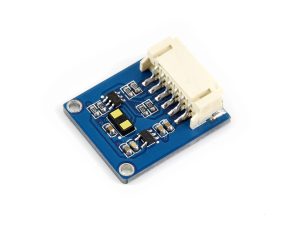
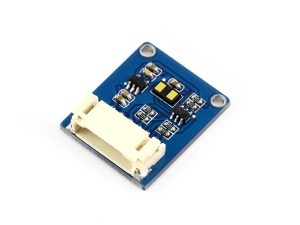
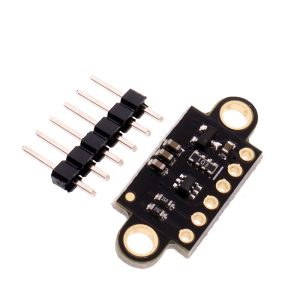
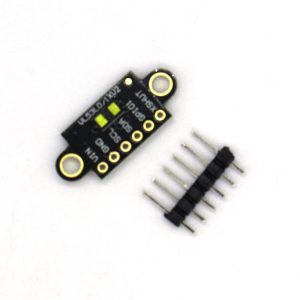
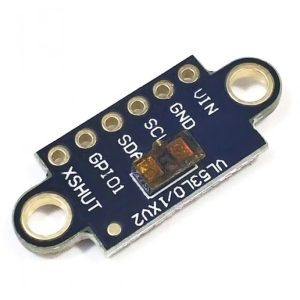
Introduction To The VL53L1X Time-of-Flight Proximity Sensor
The STMicroelectronics VL53L1X Time-of-Flight (ToF) Proximity Sensor represents a significant advancement in the field of distance measurement technology. This sensor leverages the principles of time-of-flight to deliver precise and reliable distance measurements, making it an invaluable tool in various applications ranging from consumer electronics to industrial automation. To understand the VL53L1X, it is essential to delve into the underlying technology and its operational principles.
Time-of-Flight technology operates on a straightforward yet highly effective principle. It measures the time taken for a light pulse to travel to an object and back to the sensor. By calculating this time interval, the sensor can determine the distance to the object with remarkable accuracy. The VL53L1X employs a 940 nm laser emitter, which is invisible to the human eye, ensuring that it does not interfere with the user’s experience or other optical systems. This laser emitter sends out pulses of light, and the sensor’s receiver detects the reflected pulses, enabling the calculation of the distance.
One of the standout features of the VL53L1X is its ability to perform accurate distance measurements over a wide range, from as close as 4 cm to as far as 4 meters. This broad range makes it suitable for a variety of applications, including gesture recognition, obstacle detection, and presence sensing. Furthermore, the sensor’s high-speed performance allows it to take up to 50 measurements per second, ensuring real-time responsiveness in dynamic environments.
In addition to its impressive range and speed, the VL53L1X boasts a high level of accuracy. The sensor can achieve a ranging accuracy of ±25 mm, which is particularly beneficial in applications requiring precise distance measurements. This accuracy is maintained even in challenging conditions, such as varying ambient light levels and different surface reflectivities. The sensor’s robustness in diverse environments is attributed to its advanced algorithms and calibration processes, which compensate for potential sources of error.
Another notable aspect of the VL53L1X is its compact size and low power consumption. Measuring just 4.9 mm x 2.5 mm x 1.56 mm, the sensor can be easily integrated into space-constrained designs. Its low power consumption, typically around 20 mW in active mode, makes it ideal for battery-operated devices, ensuring prolonged operational life without frequent recharging or battery replacement.
The VL53L1X also offers a range of configurable settings, allowing users to tailor its performance to specific application requirements. For instance, users can adjust the timing budget, which determines the duration of each measurement cycle. A longer timing budget can enhance accuracy, while a shorter one can increase measurement speed. Additionally, the sensor provides multiple operating modes, such as single-shot and continuous measurement modes, offering flexibility in how distance data is acquired and processed.
Moreover, the sensor’s integration with standard communication interfaces, such as I2C, simplifies its incorporation into existing systems. This ease of integration is further supported by comprehensive software libraries and development tools provided by STMicroelectronics, enabling developers to quickly and efficiently implement the sensor in their projects.
In conclusion, the STMicroelectronics VL53L1X Time-of-Flight Proximity Sensor is a versatile and powerful tool for accurate distance measurement. Its combination of wide-ranging capabilities, high accuracy, compact size, and low power consumption makes it suitable for a myriad of applications. By leveraging advanced ToF technology, the VL53L1X sets a new standard in proximity sensing, offering reliable performance in even the most challenging conditions.
Applications Of The VL53L1X In Consumer Electronics
The STMicroelectronics VL53L1X Time-of-Flight (ToF) proximity sensor is a cutting-edge technology that has found a multitude of applications in the realm of consumer electronics. This sensor, which utilizes the principles of time-of-flight to measure distances with high precision, has become an integral component in various devices, enhancing their functionality and user experience. One of the primary applications of the VL53L1X sensor is in smartphones. Modern smartphones are equipped with a plethora of sensors to provide advanced features, and the VL53L1X plays a crucial role in several of these. For instance, it is used in autofocus systems for cameras, where it ensures rapid and accurate focusing by measuring the distance between the camera and the subject. This results in sharper images and an overall improved photography experience. Additionally, the sensor is employed in facial recognition systems, where it helps in creating a 3D map of the user’s face, thereby enhancing security and enabling features such as unlocking the phone or authorizing payments.
Beyond smartphones, the VL53L1X sensor is also utilized in wearable devices such as smartwatches and fitness trackers. In these devices, the sensor can be used to measure the distance between the device and the user’s skin, which is essential for accurate heart rate monitoring and other health-related metrics. This application underscores the sensor’s ability to operate reliably in close-range scenarios, providing precise measurements that are critical for health monitoring.

Another significant application of the VL53L1X sensor is in robotic vacuum cleaners. These autonomous devices rely on a variety of sensors to navigate and clean efficiently, and the VL53L1X is instrumental in obstacle detection and avoidance. By accurately measuring distances to nearby objects, the sensor enables the vacuum cleaner to maneuver around furniture and other obstacles, ensuring thorough cleaning without collisions. This application highlights the sensor’s robustness and reliability in dynamic environments.
In addition to these applications, the VL53L1X sensor is also found in gaming consoles and virtual reality (VR) systems. In gaming consoles, the sensor can be used to track the position of controllers or other accessories, providing a more immersive gaming experience. In VR systems, the sensor contributes to accurate tracking of the user’s movements, which is essential for creating a realistic virtual environment. The sensor’s ability to provide precise distance measurements in real-time is crucial for these applications, where even slight inaccuracies can detract from the user experience.
Furthermore, the VL53L1X sensor is employed in smart home devices such as smart speakers and home security systems. In smart speakers, the sensor can be used to detect the presence of a user, enabling features such as automatic volume adjustment or activation of voice assistants. In home security systems, the sensor can be used for motion detection, providing an additional layer of security by alerting homeowners to potential intrusions.
In conclusion, the STMicroelectronics VL53L1X Time-of-Flight proximity sensor has a wide range of applications in consumer electronics, from smartphones and wearables to robotic vacuum cleaners, gaming consoles, VR systems, and smart home devices. Its ability to provide accurate and reliable distance measurements in various scenarios makes it an invaluable component in enhancing the functionality and user experience of these devices. As technology continues to advance, it is likely that the VL53L1X sensor will find even more applications, further solidifying its role in the consumer electronics industry.
How To Integrate The VL53L1X With Microcontrollers
Integrating the STMicroelectronics VL53L1X Time-of-Flight (ToF) proximity sensor with microcontrollers involves several key steps, each requiring careful attention to detail to ensure accurate and reliable performance. The VL53L1X sensor, known for its precise distance measurement capabilities, operates using a laser emitter and a single-photon avalanche diode (SPAD) array to measure the time it takes for emitted photons to reflect off a target and return to the sensor. This process, known as time-of-flight, allows the sensor to calculate distances with high accuracy.
To begin the integration process, it is essential to establish a proper electrical connection between the VL53L1X sensor and the microcontroller. The sensor communicates via the I2C protocol, necessitating the use of the I2C pins on the microcontroller. Typically, the sensor’s SDA (data) and SCL (clock) lines are connected to the corresponding I2C pins on the microcontroller. Additionally, the sensor requires a stable power supply, usually 2.8V, and a ground connection. It is also advisable to include pull-up resistors on the I2C lines to ensure reliable communication.
Once the hardware connections are established, the next step involves configuring the microcontroller’s I2C interface. This configuration includes setting the appropriate clock speed for the I2C bus, which is often 400 kHz for the VL53L1X sensor. The microcontroller’s I2C peripheral must be initialized, and the sensor’s I2C address, typically 0x29, should be specified. It is crucial to verify that the microcontroller can successfully communicate with the sensor by performing a simple read operation from one of the sensor’s registers.
Following successful communication, the VL53L1X sensor must be initialized and configured. This process involves writing specific values to the sensor’s registers to set parameters such as the timing budget, inter-measurement period, and distance mode. The timing budget determines the duration of each measurement, with longer budgets providing more accurate results. The inter-measurement period sets the interval between consecutive measurements, while the distance mode configures the sensor for short, medium, or long-range measurements.

To facilitate these configurations, STMicroelectronics provides a comprehensive API (Application Programming Interface) that abstracts the low-level register manipulations. This API, available in C, can be integrated into the microcontroller’s firmware, simplifying the process of configuring and using the sensor. The API includes functions for initializing the sensor, setting measurement parameters, and retrieving distance measurements.
Once the sensor is configured, the microcontroller can initiate distance measurements by sending the appropriate commands via the I2C interface. The VL53L1X sensor will then perform the measurement and store the result in its internal registers. The microcontroller can read these registers to obtain the measured distance. It is important to handle any potential errors or exceptions, such as communication failures or out-of-range measurements, to ensure robust operation.
In addition to basic distance measurements, the VL53L1X sensor offers advanced features such as multi-zone ranging and histogram-based measurements. These features can be leveraged to enhance the sensor’s performance in specific applications, such as gesture recognition or obstacle detection. Integrating these advanced features requires a deeper understanding of the sensor’s capabilities and additional configuration steps.
In conclusion, integrating the STMicroelectronics VL53L1X Time-of-Flight proximity sensor with microcontrollers involves establishing proper electrical connections, configuring the I2C interface, initializing and configuring the sensor, and retrieving distance measurements. By following these steps and utilizing the provided API, developers can effectively harness the capabilities of the VL53L1X sensor in a wide range of applications.
Comparing VL53L1X With Other Time-of-Flight Sensors
The STMicroelectronics VL53L1X Time-of-Flight (ToF) proximity sensor stands out in the realm of distance measurement technologies due to its advanced capabilities and precision. When comparing the VL53L1X with other ToF sensors, several key factors come into play, including measurement range, accuracy, power consumption, and integration ease. These aspects collectively determine the suitability of a sensor for various applications, from consumer electronics to industrial automation.
To begin with, the measurement range of the VL53L1X is notably impressive. It can measure distances up to 4 meters, which is significantly higher than many other ToF sensors in the market. For instance, the VL6180X, another sensor from STMicroelectronics, has a maximum range of only 60 centimeters. This extended range of the VL53L1X makes it particularly advantageous for applications requiring longer distance measurements, such as robotics and drones, where precise distance sensing over several meters is crucial.
In terms of accuracy, the VL53L1X also excels. It offers a high degree of precision with a typical accuracy of ±3% at distances up to 2 meters. This level of accuracy is comparable to, if not better than, other ToF sensors like the VL53L0X, which has a similar accuracy but a shorter range. The VL53L1X achieves this through its advanced photon detection technology and sophisticated algorithms that minimize errors caused by ambient light and other environmental factors. Consequently, this makes the VL53L1X highly reliable for applications where precise distance measurement is critical, such as in gesture recognition systems and augmented reality devices.
Power consumption is another critical factor when comparing ToF sensors. The VL53L1X is designed to be energy-efficient, consuming only 20 mW in active mode and less than 1 µW in standby mode. This low power consumption is particularly beneficial for battery-operated devices, such as smartphones and wearable technology, where conserving energy is paramount. In contrast, some other ToF sensors may consume more power, making them less suitable for such applications. For example, the LIDAR-Lite v3, while offering a longer range, consumes significantly more power, which can be a limiting factor for portable devices.
Ease of integration is also a significant consideration. The VL53L1X is designed with a compact form factor and comes with a comprehensive software package, including drivers and example codes, which simplifies the integration process. This is particularly advantageous for developers who need to quickly and efficiently incorporate distance sensing capabilities into their products. Other ToF sensors may not offer the same level of integration support, potentially increasing development time and complexity. For instance, some LIDAR-based sensors, while offering high performance, may require more extensive calibration and setup, which can be a barrier for rapid development.
In conclusion, the STMicroelectronics VL53L1X Time-of-Flight proximity sensor offers a compelling combination of extended measurement range, high accuracy, low power consumption, and ease of integration. These attributes make it a versatile and reliable choice for a wide range of applications, from consumer electronics to industrial automation. When compared to other ToF sensors, the VL53L1X consistently demonstrates superior performance in key areas, making it a standout option in the field of distance measurement technologies.

Troubleshooting Common Issues With The VL53L1X Sensor
The STMicroelectronics VL53L1X Time-of-Flight (ToF) proximity sensor is a highly advanced device that offers precise distance measurement capabilities. However, like any sophisticated technology, users may encounter certain issues during its implementation. Understanding these common problems and their solutions can significantly enhance the performance and reliability of the VL53L1X sensor.
One frequent issue users face is inaccurate distance measurements. This can often be attributed to improper sensor calibration. Calibration is crucial for ensuring that the sensor provides accurate readings. To address this, it is essential to follow the manufacturer’s guidelines for calibration meticulously. This typically involves placing the sensor at a known distance from a target and adjusting the sensor settings accordingly. Additionally, environmental factors such as ambient light and temperature can affect the sensor’s accuracy. Ensuring that the sensor operates within its specified environmental conditions can mitigate these inaccuracies.
Another common problem is the sensor’s inability to detect objects at certain distances. This issue can arise from several factors, including the reflectivity of the target object and the angle at which the sensor is positioned. The VL53L1X sensor relies on the reflection of emitted light to measure distance. Therefore, highly reflective or very dark surfaces can lead to erroneous readings. To troubleshoot this, users should ensure that the target object has a moderate reflectivity and that the sensor is positioned perpendicularly to the target surface. Additionally, adjusting the sensor’s timing budget and inter-measurement period can help improve detection capabilities.
Interference from other light sources is another challenge that can affect the performance of the VL53L1X sensor. The sensor operates by emitting a laser pulse and measuring the time it takes for the pulse to return after reflecting off an object. External light sources, especially those with similar wavelengths, can interfere with this process. To minimize such interference, it is advisable to use the sensor in environments with controlled lighting conditions. If this is not feasible, implementing optical filters or shields can help reduce the impact of external light sources.
Communication issues between the VL53L1X sensor and the microcontroller are also common. These issues often stem from incorrect wiring or configuration settings. The VL53L1X sensor communicates via the I2C protocol, which requires proper connection of the SDA (data) and SCL (clock) lines. Ensuring that these lines are correctly connected and that the pull-up resistors are appropriately sized is crucial for reliable communication. Additionally, verifying that the I2C address of the sensor matches the address specified in the microcontroller’s code can resolve many communication problems.
Lastly, power supply issues can lead to erratic sensor behavior. The VL53L1X sensor requires a stable power supply within its specified voltage range. Fluctuations in the power supply can cause the sensor to malfunction or provide inconsistent readings. Using a regulated power supply and ensuring that the power lines are free from noise can help maintain sensor stability.
In conclusion, while the STMicroelectronics VL53L1X Time-of-Flight proximity sensor is a powerful tool for distance measurement, users may encounter several common issues during its use. By understanding and addressing these problems—such as inaccurate measurements, detection failures, light interference, communication issues, and power supply instability—users can optimize the performance of the VL53L1X sensor. Adhering to best practices and following the manufacturer’s guidelines will ensure that the sensor operates reliably and accurately in various applications.
ВОПРОСЫ И ОТВЕТЫ
1. **What is the maximum ranging distance of the VL53L1X sensor?**
– The maximum ranging distance of the VL53L1X sensor is up to 4 meters.
2. **What is the field of view (FoV) of the VL53L1X sensor?**
– The field of view (FoV) of the VL53L1X sensor is approximately 27 degrees.
3. **What communication interface does the VL53L1X use?**
– The VL53L1X uses an I2C communication interface.
4. **What is the typical ranging accuracy of the VL53L1X sensor?**
– The typical ranging accuracy of the VL53L1X sensor is ±25 mm.
5. **What is the operating voltage range for the VL53L1X sensor?**
– The operating voltage range for the VL53L1X sensor is 2.6V to 3.5V.
Заключение
The STMicroelectronics VL53L1X Time-of-Flight Proximity Sensor is a highly accurate and versatile sensor that offers long-distance ranging capabilities up to 4 meters with a fast measurement rate. It utilizes advanced laser technology to provide precise distance measurements, making it suitable for a wide range of applications including robotics, gesture recognition, and industrial automation. Its compact size, low power consumption, and ease of integration further enhance its appeal for developers and engineers seeking reliable proximity sensing solutions.
If you have purchasing needs for this series, please feel free to contact us!
